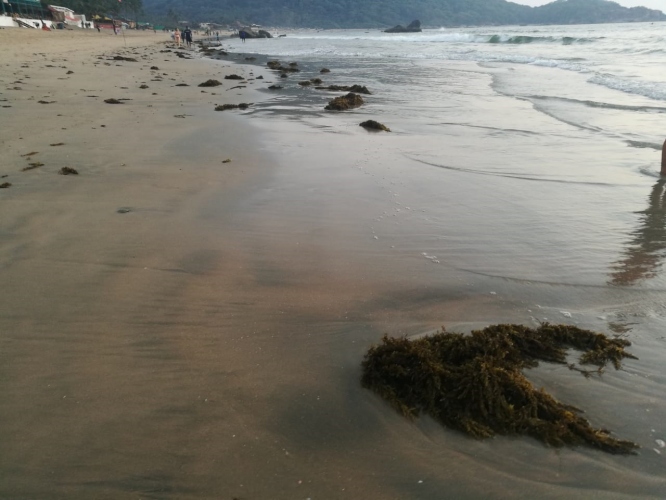
CANACONA
After four days of algal bloom infestation of Canacona beach shore, Canacona shoreline is now infested with discards of marine fungi (sargassum algae, a type of seaweed) which washed ashore on Sunday.
Sargassum, though harmless in sea, is however believed to be dangerous to humans once on land after it decays.
A large number of tourists on Agonda beach shore were taken aback as half of the beach had its sand from the southern end left with traces of marine fungi (seaweed) as the low tide set in on Sunday evening.
It may be recalled that algal bloom, which turned the coastal waters into green emanating foul smell, kept tourists away from entering the seawater. Compounding the algal bloom are the jellyfish on the Canacona coast.
There were incidents of dead fish washed ashore at Patnem, Polem besides a few incidents in Agonda and Khola areas.
Incidentally, many tourists who had bad experience with jellyfish, remained cautious on seeing the seaweed and preferred to keep themselves away from the beach, realising only later it was harmless.
Sargassum generally inhabits shallow waters and coral reefs and the is widely known for its planktonic (free-floating) species.
According to Dr Cajie Silva who has done PhD in Marine Biology, the tides and upwelling can be reasons behind the same.
When asked if it was harmful to humans, Dr Cajie explained, “No, at least looking at the quantity washed ashore. People can still collect it and use it as fertilizer.”
According to a report published in one of the international journals, besides aesthetically unpleasant, the sargassum seaweed and the gases it emits as it rots along the shores have been proven to be hazardous to human health.
In the water, sargassum can be harmless to humans, but once it lands on the beach and starts decomposing, it begins to release hydrogen sulfide gas or H2S.